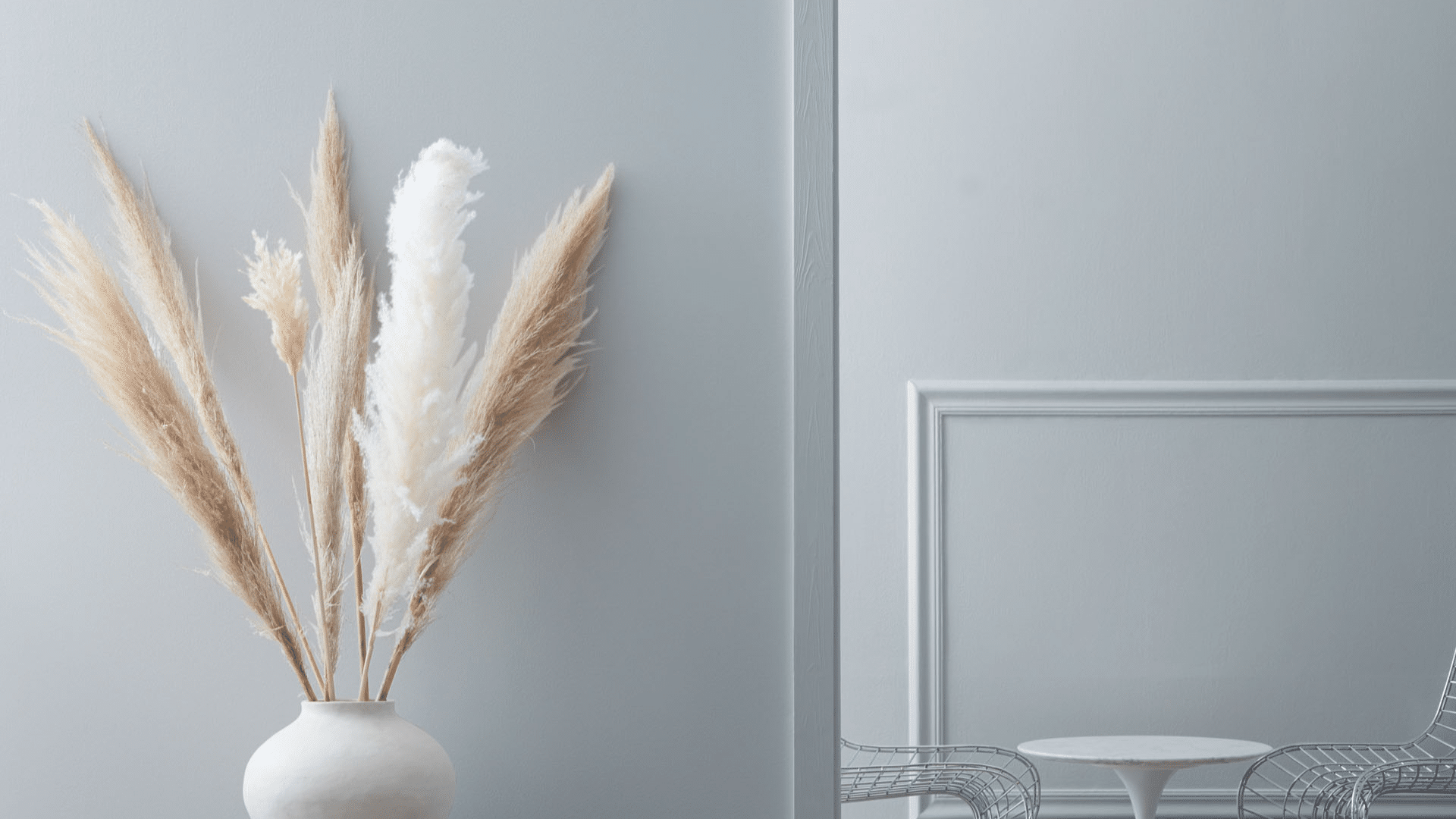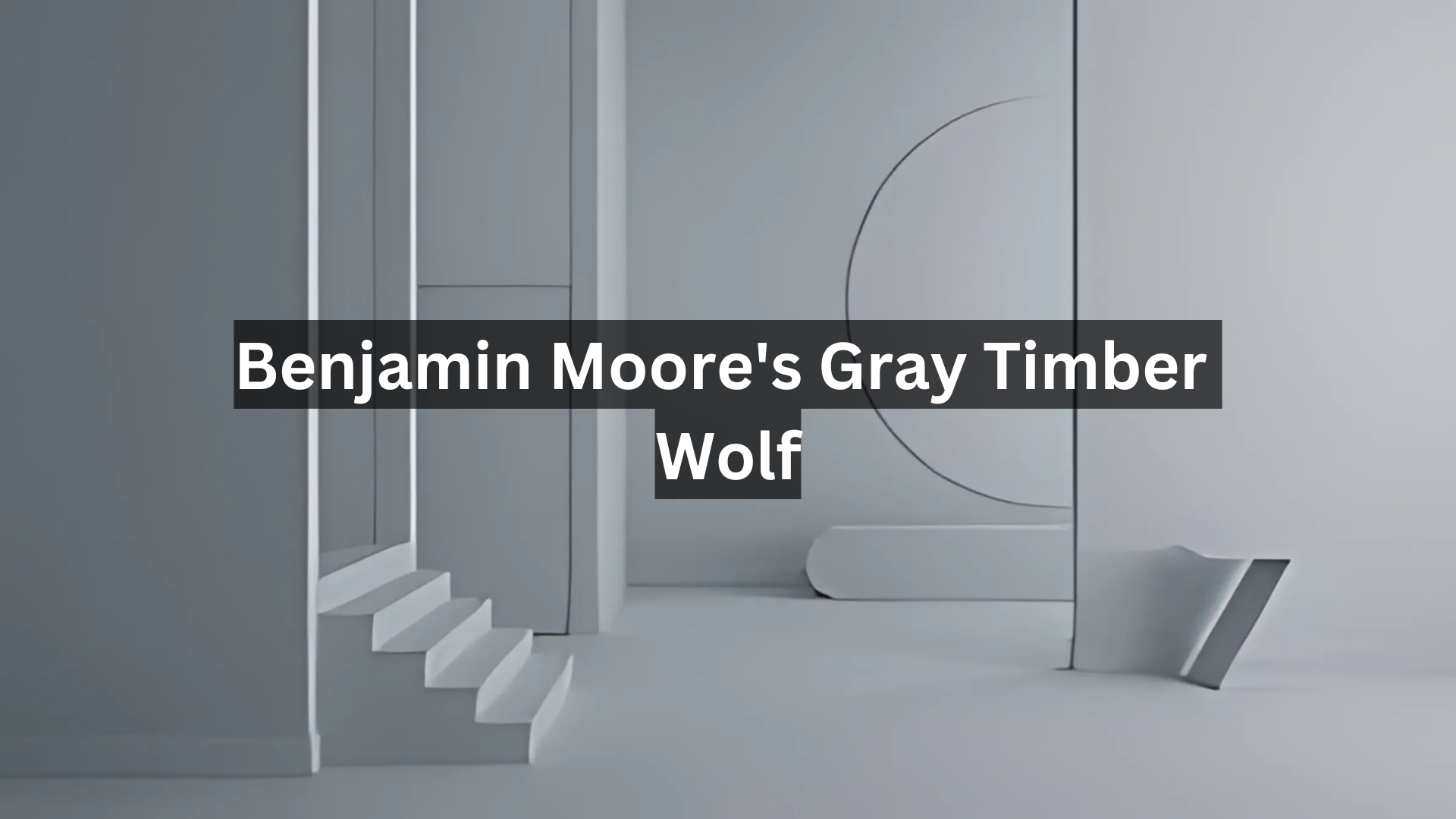Are you trying to find the right gray paint for your home? I’m here to help with a complete look at Benjamin Moore Gray Timber Wolf.
In this article, you’ll learn:
- The exact color features of Gray Timber Wolf
- Which rooms work best with this paint
- How this gray shifts in different light
- Simple ways to use it in your home
As someone who has worked with Gray Timber Wolf in many homes, I’ll share real results based on experience. I’ve seen how this balanced gray transforms spaces without the common issues found in other grays.
Let me help you decide if this gray is the right choice for your walls. By the end of this guide, you’ll know if Gray Timber Wolf is the answer to your paint questions.
The True Nature of Gray Timber Wolf (2126-50)

Gray Timber Wolf (2126-50) is a soft, medium-light gray with cool undertones. It is a perfect middle ground—not too dark or light—and offers good depth that adds interest to any room.
The color creates a calm, misty feeling – clean but with hidden layers. Unlike some grays that turn too blue or purple, Gray Timber Wolf stays a true gray in most lighting situations.
This paint has good coverage and usually needs two coats. It works well on walls, furniture, and cabinets, giving each surface a smooth, natural finish.
For the technical details, Gray Timber Wolf has an LRV (Light Reflectance Value) of 52.07, which places it in the medium range. This means it reflects a moderate amount of light while still giving noticeable depth.
How Does This Gray Change a Space?

Gray Timber Wolf creates a feeling of calm mixed with class. When I painted a client’s living room with this color, the space felt both modern and welcoming.
This gray makes spaces feel:
- Calm without being cold
- Clean and put-together
- Balanced and soothing
- Lasting and thoughtful
Large rooms with Gray Timber Wolf walls feel grounded yet open. Small spaces gain depth and interest rather than feeling closed in. The color makes the rooms feel planned and cohesive without being too serious.
Where to Use Gray Timber Wolf in Your Home for The Best Look?
I’ve found that Gray Timber Wolf works best in these areas:
- Living rooms: Create a smart, calming setting
- Bedrooms: Make a restful, clean space
- Home offices: Helps with focus without being too dark
- Kitchen cabinets: Adds depth without taking over the space
- Dining rooms: These make for a classy, engaging dining setting
This color also looks great as an accent wall, where it adds substance without controlling the space. I once painted a client’s entire hallway with Gray Timber Wolf, and it changed the area into a stunning gallery-like space.
What Flooring Looks Best with Gray Timber Wolf Walls?
From my projects, these floors pair nicely with Gray Timber Wolf:
- Medium oak: Creates a warm balance against the cool gray
- White oak: Brings brightness that offsets the mid-tone gray
- Dark walnut: Adds depth that feels grounded and rich
- Natural stone: Adds texture that enhances the subtle layers
- Light carpet: Creates a soft, modern look
I find that almost any floor tone works well with Gray Timber Wolf walls, which is part of its appeal. This flexible gray adapts to your existing elements while keeping spaces feeling thoughtful.
Color Combinations that Go Well with Gray Timber Wolf
Gray Timber Wolf is a sophisticated, mid-tone gray with subtle, warm undertones that make it incredibly versatile in design schemes. This elegant neutral serves as an excellent foundation for numerous color palettes.
1. Benjamin Moore’s White Dove (OC-17)

This clean white creates a striking contrast with Gray Timber Wolf. I like using it on trim and ceilings. The combination feels fresh and modern. For a lasting look, try Gray Timber Wolf walls with White Dove trim, doors, and ceiling.
2. Benjamin Moore’s Mount Saint Anne (1565)

This gentle blue creates a calming palette with Gray Timber Wolf. The combination feels cooling and creates a subtle contrast. I love using Mount Saint Anne in bedrooms or bathrooms next to Gray Timber Wolf spaces for a clean, connected flow.
3. Benjamin Moore’s October Mist (1495)

This muted green creates a natural palette with Gray Timber Wolf. The combination feels organic and balanced. I’ve used this in spaces where the green in furniture or accent walls adds life to gray surroundings.
4. Benjamin Moore’s Manchester Tan (HC-81)

This warm neutral balances Gray Timber Wolf’s coolness. The combination feels cozy and grounded. I’ve used it in living spaces where beige furniture or textiles add warmth to gray walls.
5. Benjamin Moore’s Kendall Charcoal (HC-166)

This deep gray creates a subtle tonal contrast with Gray Timber Wolf. I’ve used this combination in dining rooms and offices where the charcoal accents add substance and depth. It makes a clean, same-color look.
6. Benjamin Moore’s First Light (2102-70)

This light pink creates an unexpected but beautiful palette with Gray Timber Wolf. The combination feels fresh and current while keeping a calm, cohesive feel. I often use this combination in bedrooms or sitting areas.
7. Benjamin Moore’s Black Satin (2131-10)

A true black creates dramatic contrast with Gray Timber Wolf. The combination feels bold yet clean. This works especially well in spaces where you want a modern, graphic feel. Try using black on furniture pieces or window frames against Gray Timber Wolf walls.
8. Benjamin Moore’s Hale Navy (HC-154)

For a classic, lasting palette, navy and Gray Timber Wolf work wonderfully together. The depth complements the mid-tone gray.
This pairing works especially well in offices and dining rooms. I love using Hale Navy as an accent color through built-ins or furniture against Gray Timber Wolf walls.
9. Benjamin Moore’s Golden Retriever (2165-30)

This warm color creates a beautiful contrast with the cool Gray Timber Wolf. The combination feels balanced yet interesting. I’ve used this in living rooms where gold accents against Gray Timber Wolf walls create warmth without being too much.
10. Benjamin Moore’s Incense Stick (2115-20)

This warm bronze color creates a rich contrast with Gray Timber Wolf. The combination feels grounded and sophisticated.
I’ve used this in dining rooms and studies where the bronze accents add warmth and depth to walls painted in Gray Timber Wolf. The earthy quality of Incense Stick brings out the subtle cool tones in Gray Timber Wolf without competing with them.
Simple Ways to Use Gray Timber Wolf in Your Home
You don’t need to paint a whole room to enjoy this color. Here are some quick ways to use it:
- Paint just one accent wall for added depth
- Use it on kitchen islands with white cabinets
- Try it on interior doors for a fresh update
- Use it for bathroom vanities to add subtle color
In my own home, I painted a hall console table with Gray Timber Wolf. It became a standout piece that adds class to my more neutral entryway.
For a client with an older dining set, we painted the chairs Gray Timber Wolf while keeping the table white. The result was a custom look that felt both modern and lasting.
For those wanting to start even smaller, try painting picture frames with Gray Timber Wolf. The color adds a subtle backdrop for artwork without being too stark.
Gray Timber Wolf vs. Other Grays: What Makes It Different
What makes Gray Timber Wolf special is its balanced blue-gray undertones that don’t take over the color. It has character but isn’t tricky like some grays with strong purple or green undertones.
I’ve seen homes where this color has looked good for many years without feeling dated. Let’s see how Gray Timber Wolf compares to other popular grays:
| Color | Undertones | Best Uses | Room Types | What Makes It Different |
|---|---|---|---|---|
| Gray Timber Wolf | Cool blue-gray | Full rooms, furniture | Living rooms, offices | True gray with subtle blue undertones |
| Coventry Gray | Warm | Full rooms, exteriors | Living rooms, exteriors | Warmer than Gray Timber Wolf with slight green hints |
| Stonington Gray | Cool blue | Full rooms, open spaces | Bedrooms, kitchens | Lighter and more blue than Gray Timber Wolf |
| Chelsea Gray | Warm | Accent walls, cabinets | Dining rooms, kitchens | Much darker than Gray Timber Wolf with more brown |
| Gray Owl | Cool | Full rooms, bright spaces | Living rooms, bedrooms | Much lighter than Gray Timber Wolf |
Design Styles that Work Well with Gray Timber Wolf
- Modern: Perfect with clean lines and minimal decor
- Transitional: Adds clean depth to mixed material palettes
- Contemporary: Works beautifully with bold accents and metal finishes
- Traditional: Pairs well with classic elements for an updated look
- Industrial: Complements raw materials and open spaces
I wouldn’t use it in spaces where you want a very warm, cozy color. But for adding soft, clean depth, it’s excellent.
Conclusion
After testing many gray paints over the years, Gray Timber Wolf remains one of my top picks. It hits the sweet spot – not too light or dark, cool without being too blue or purple.
What makes Gray Timber Wolf special is how well it works in different settings. I’ve used it in both modern apartments and traditional homes with equal success. It adapts to almost any style.
Always test before you commit! Paint a large board and check it in your space at different times of day. Don’t fear its cool undertones – that’s its best feature. Pair it with warm woods for balance or crisp whites for contrast.
Gray Timber Wolf creates spaces that feel both current and lasting. It’s not a passing trend but a smart choice that will make your home better for years to come.
Frequently Asked Questions
Will Gray Timber Wolf Look Too Dark in My Space?
Gray Timber Wolf is a medium gray that will add some depth to your walls. In small or poorly lit rooms, it may look darker than expected. To balance this, use good lighting and lighter furnishings.
Does Gray Timber Wolf Work in Rooms with Limited Natural Light?
Yes, but know it will appear darker and slightly cooler in these spaces. To make it work well, add plenty of artificial lighting and use warm accents through textiles and wood tones to balance the coolness.
How Does Gray Timber Wolf Change with North versus South Exposure?
In north-facing rooms, Gray Timber Wolf appears cooler and may show more of its subtle blue undertones. In south-facing rooms, the color becomes more balanced and shows its true gray character throughout the day.
Can Gray Timber Wolf Work for Exterior Trim?
Yes! I’ve used it on home exteriors, where it creates a subtle, classy look. It pairs particularly well with white, black, or navy siding.
How Long Does Gray Timber Wolf Stay Current Before Looking Outdated?
Gray Timber Wolf has excellent staying power. Unlike trendy blues or greens, this balanced gray has remained popular for many years due to its flexibility and subtle depth.

